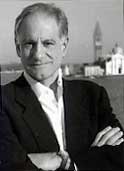© 2002-2017 Italian-mysteries.com

|
||||||||||||||||||||||||||||||
|
||||||||||||||||||||||||||||||
John BerendtThe City of Falling AngelsJACKET NOTES: V E N I C E -- a city of masks and riddles, where narrow streets and passageways form a giant maze that confounds the uninitiated and deepens the sense of mystery. As captivating as it is elusive, the city teeters in precarious balance between endurance and decay. Architectural treasures crumble--foundations shift, ornaments fall--even as efforts to preserve them are under way. In The City of Falling Angels, John Berendt, author of the record-breaking bestseller Midnight in the Garden of Good and Evil, unveils the enigmatic Venice as only he can. The story opens on the evening of January 29, 1996, when a sensational fire destroys the historic Fenice Opera House. The loss of the Fenice, where five of Verdi's operas premiered, is a catastrophe for Venetians, made worse by the revelation that arson might have been the cause. Arriving three days after the fire, Berendt becomes a kind of detective-inquiring into the nature of life in this remarkable city while gradually revealing the truth about the fire. In the course of his investigations, Berendt encounters a rich cast of characters: a hard-as-nails prosecutor who blushes when he's angered; a prominent Venetian poet whose shocking "suicide" prompts his friends to pursue a murder suspect on their own; the First Family of American expatriates facing the loss of their palace on the Grand Canal after four generations of ownership; an organization of party-going, high-society Americans busily raising money to preserve the art and architecture of Venice, while quarreling among themselves, questioning each other's motives, and drawing startled Venetians into the fray; a contemporary Venetian surrealist painter known locally as an outrageous prankster and provocateur; a twenty-first-generation master glassblower whose sons are locked in a dynastic war; and numerous others-pigeon trappers, scapegoats, hustlers, sleepwalkers, a believer in Martians, the Plant Man, the Rat Man of Treviso, and Henry James. Berendt tells a tale full of atmosphere and surprise as the stories build, one after the other, ultimately coming together to portray a world as finely drawn as a still-life painting. The fire and its aftermath serve as a leitmotif that runs throughout the book, contributing to the ever-mounting suspense and revealing the city of Venice in all its magic, mystery, and decadence. Venice Bristles at the Savannah Treatment
|
||||||||||||||||||||||||||||||

